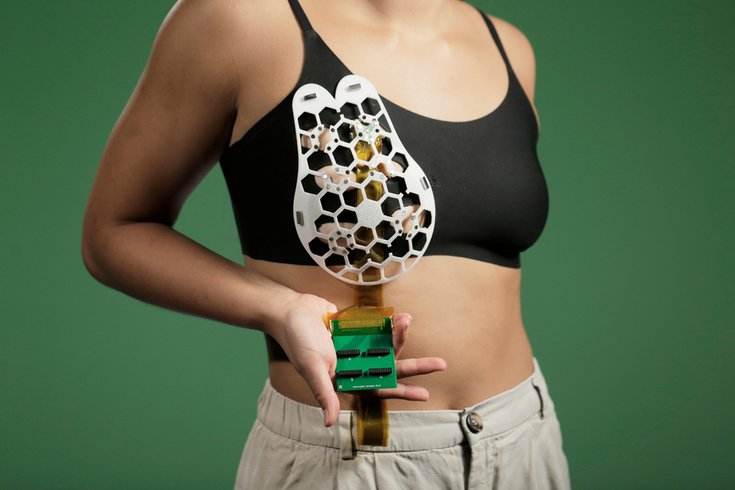
August 07, 2023
 Source/Massachusetts Institute of Technology
Source/Massachusetts Institute of Technology
A wearable device developed by MIT researchers could enable women to screen themselves for breast cancer at home in between mammograms, increasing the likelihood of detecting cancer early.
Early detection of breast cancer is the strongest predictor of survival, with up to 99% of women receiving successful treatment as long as the disease does not spread within the breasts or to other parts of the body.
Most women rely on periodic mammograms to get screened for signs of breast cancer. The X-ray imaging method is highly effective at detecting cancer, but screenings must be done in clinics. Accessibility can be a problem for some women, and others may not get them as frequently as advised.
Researchers at the Massachusetts Institute of Technology are developing a wearable, at-home screening device that women can place over their bras and scan using an ultrasound tracker. It is intended to help high-risk women stay on top of possible early-stage tumors in between routine mammograms.
The diagnostic device uses a flexible, 3D-printed patch with openings that can be comfortably placed over a specialty bra that has holes to allow contact between the patch and skin. The scanner is being designed as a miniaturized version of the ultrasound devices found in medical imaging centers. Women wearing the devices would run an ultrasound tracker over six positions to get complete images of their breasts.
Most importantly, the device doesn't require any special expertise or skills. The images obtained by the ultrasound tracker can be analyzed using artificial intelligence that's overseen by a medical provider. And since women who use the device can scan their breasts more frequently, the data can be interpreted over time by a doctor, rather than having a radiologist review images taken years apart.
Researchers have not said how soon this technology could be made available to the public.
"This technology holds the promise of breaking down the many barriers for early breast cancer detection by providing a more reliable, comfortable and less intimidating diagnostic," said Catherine Ricciardi, nurse director at MIT’s Center for Clinical and Translational Research.
The device was inspired by an MIT researcher's relative who died six months after she was diagnosed with late-stage breast cancer at 49 years old. She had undergone recommended screenings, but the progression of the disease occurred during the interval between mammograms. These interval cancers account for about 20-30% of all breast cancer cases and tend to be more aggressive than those identified in routine scans.
Earlier this year, the U.S. Preventive Services Task Force updated its guidelines for breast cancer screenings to recommend that all women 40 and older get screened for breast cancer every other year. The previous guideline started at 50 and older.
The MIT research on the wearable device was published in the journal Science Advances.